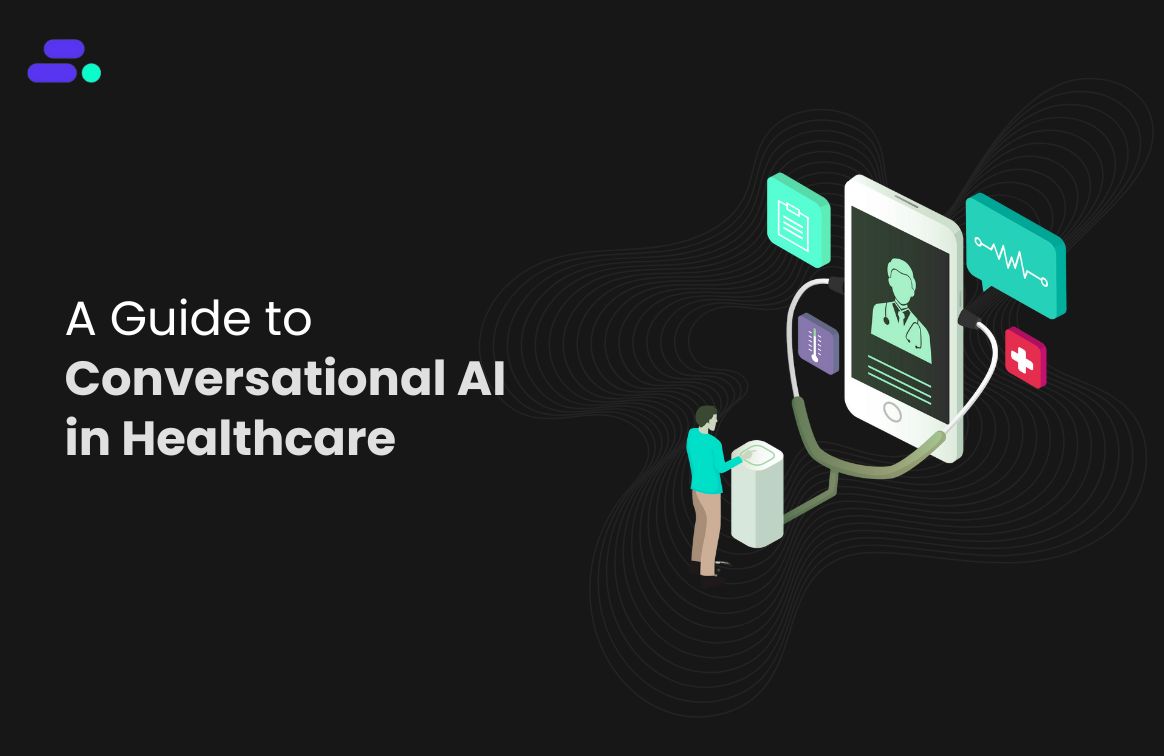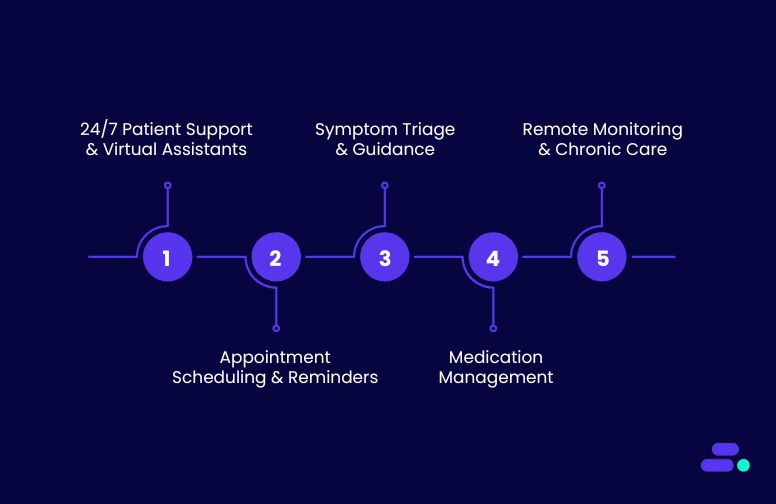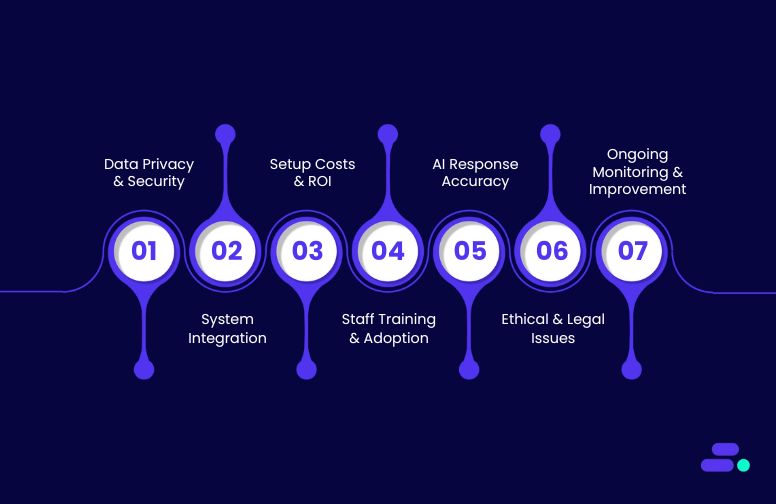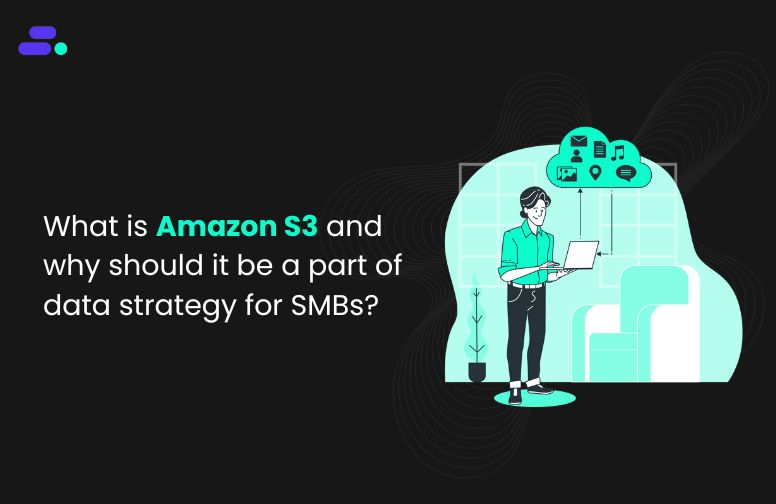This is a div block with a Webflow interaction that will be triggered when the heading is in the view.

Modernize your cloud. Maximize business impact.
For small and mid-sized businesses (SMBs), cloud migration is an opportunity to modernize operations. However, it can also expose security blind spots if not planned carefully. Misconfigured access, exposed data, or missing compliance controls can turn a technical win into a reputational risk.
Take the case of a mid-sized healthcare provider migrating patient records to Amazon S3. The migration itself goes well, but they might overlook S3 Block Public Access by default. A week later, a routine security scan reveals that some storage buckets are publicly accessible. This puts the company at risk of violating HIPAA rules. It’s caught in time, but the instance triggers a full audit and weeks of remediation.
Incidents like this usually happen because the migration overlooks essential safeguards. This article breaks down the most common security pitfalls SMBs face during cloud migration, and shows how to avoid them with practical, preventive steps.
Key takeaways:
- Treat security as a migration stream: Security should be integrated from the planning phase through execution, not bolted on after workloads move.
- Don’t carry over legacy risks: Lift-and-shift approaches often transfer outdated controls. Always reassess configurations and patch known vulnerabilities before migration.
- IAM missteps cause the most damage: Overly permissive roles or missing MFA setups remain leading causes of breaches. Tighten access controls early.
- Compliance doesn’t auto-transfer: Moving to the cloud doesn’t automatically preserve HIPAA, PCI, or GDPR compliance. Logging, data handling, and access reviews must be revalidated.
- Small teams can win with the right tools: Cloud-native security services and automation help SMBs build strong defenses, especially when paired with expert guidance.
Key cloud migration security challenges for SMBs, and how to solve them?

Cloud migration introduces a shift in how IT environments are secured. For SMBs, this shift often happens under resource constraints, without specialized security teams or mature DevSecOps practices in place. As a result, critical vulnerabilities frequently emerge.
According to IBM’s cost of a data breach report, 40% of data breaches involved data stored across multiple environments. Breached data stored in public clouds incurred the highest average breach cost at USD 5.17 million.
Common issues like open Amazon S3 buckets, broad IAM access, insecure APIs, and unpatched workloads often stem from rushed migrations. SMBs can reduce risk by treating security as a parallel track, encrypting data, enforcing least-privilege access, automating compliance, and baking security into CI/CD pipelines.
SMBs will face many security challenges during transition, but each of them has a fix that can be implemented early to reduce cost and downtime:
Challenge 1: Data exposure during transfer or storage
When moving data to the cloud, it’s easy to assume AWS will handle encryption by default. But during migration, especially when using tools like AWS DMS or moving large datasets to Amazon S3, data can pass through unsecured channels or land in buckets without encryption turned on. That’s when it gets risky. A misstep here could expose sensitive info like customer records, financials, or health data.
The fix: To keep data protected, encryption needs to be covered in two places: when it's moving and when it’s sitting in AWS.
For data in transit, enforce TLS 1.2 or higher.
- When using AWS DMS, turn on SSL for every connection point.
- Set bucket policies in Amazon S3 to reject unencrypted uploads.
For data at rest, turn on encryption by default.
- Use AWS KMS (Key Management Service), either AWS-managed or customer-managed keys.
- Enable encryption on Amazon S3, RDS, and EBS volumes from the start.
- Use AWS Config to alert if anything’s left unencrypted.
- Keep an eye on key usage and access patterns with AWS CloudTrail.
How one SMB handled it: A growing dental clinic group migrating its patient database to Amazon RDS ran into a pitfall. Backups weren’t encrypted, and neither were the Amazon S3 uploads coming from old file exports. However, with the help of their AWS partner, they enabled SSL connections to the Amazon RDS instance, switched on encryption using a customer-managed KMS key, and applied Amazon S3 policies to block any unencrypted objects. They also routed DMS traffic through a VPN tunnel using IPSec with AES-256.
The migration wrapped without a hitch, and passed a HIPAA audit two months later.
Challenge 2: Weak or overly permissive IAM policies
Many SMBs start out with all-hands admin access just to “get things working” during early cloud stages. But that kind of shortcut doesn’t scale. Broad IAM roles, like giving full AdministratorAccess to multiple users or using wildcard permissions (*), leave the door wide open for accidents or attacks. A single compromised user account could mean access to everything from Amazon S3 buckets to billing dashboards.
The fix: Secure IAM starts with discipline, not complexity. AWS gives the tools. SMBs just need a plan.
- Least privilege first: Define roles around job functions. For example, DevOps engineers might get full access to Amazon EC2 and AWS CloudFormation, but only read access to Amazon S3.
- Use IAM policies with explicit, scoped permissions instead of wildcards.
- Enforce MFA (Multi-Factor Authentication) for all users, especially those with console access.
- Centralize identity using AWS IAM Identity Center (formerly AWS SSO), and connect it to the existing directory (like Microsoft AD or Okta).
- Set up regular reviews using IAM Access Analyzer to catch unused permissions or over-provisioned roles.
How one SMB handled it: A fintech startup had six developers sharing a root account during testing. Fast, but dangerous. On the suggestion of their AWS partner, they split out individual IAM roles, restricted access based on team functions, and required MFA for each user. They implemented IAM Identity Center and linked it with Google Workspace for strong login control. Within a week, they went from full-access chaos to tight, auditable roles that passed their first investor security review.
Challenge 3: Misconfigured cloud environments
Default settings in AWS are designed for flexibility, not security. That’s fine when spinning up test environments, but it’s risky in production. It is easy to overlook things like open Amazon S3 buckets, 0.0.0.0/0 rules in security groups, or disabled encryption on Amazon RDS or EBS volumes. These misconfigurations leave systems exposed to the internet or unencrypted by default.
The fix: Security misconfigurations are preventable with the right guardrails in place.
- Use AWS Config to continuously scan for misaligned settings across services (e.g., unencrypted volumes, non-compliant IAM roles).
- Enable AWS Security Hub to consolidate security alerts and automatically check the environment against AWS best practices.
- Trusted Advisor provides real-time recommendations across security, performance, and cost, flagging things like publicly accessible storage or overly broad access rules.
- Establish service control policies (SCPs) in AWS Organizations to prevent high-risk configurations before they happen.
- Automate remediation with tools like AWS Systems Manager Automation or integrations with third-party platforms like Palo Alto Prisma Cloud or Datadog.
How one SMB solved it: A healthcare tech company found that one of its Amazon S3 buckets used for diagnostic image uploads was accidentally made public during testing. However, with guidance from their AWS partner, they activated Security Hub and AWS Config, which flagged the exposure. They locked down the bucket, enforced encryption at rest, and added guardrails to prevent similar issues in future environments. That quick action helped them avoid a serious HIPAA compliance violation.

Challenge 4: Unsecured APIs and integration points
During migration, existing APIs used for mobile apps, third-party integrations, or internal tools are often reused without being reassessed for cloud exposure. What was once protected behind a corporate firewall might now be reachable over the public internet. Without safeguards like authentication, rate limiting, or request validation, these endpoints become easy targets for abuse, injection attacks, or data exfiltration.
The fix: AWS offers purpose-built tools to lock down APIs without complicating development:
- Use Amazon API Gateway to serve APIs through a managed layer that supports throttling, access control, and monitoring out of the box.
- Protect public endpoints with AWS WAF (Web Application Firewall) to block common attack patterns like SQL injection or cross-site scripting.
- Enforce authentication and authorization using Amazon Cognito, custom tokens, or IAM roles for internal services.
- Log and monitor API activity with CloudWatch Logs and AWS X-Ray to detect anomalies in usage or performance.
- Use resource policies and VPC links to limit API access to only trusted networks when needed.
How one SMB solved it: A fintech startup that migrated its customer dashboard to AWS was exposing internal APIs for billing and account updates without authentication. After noticing unusual traffic patterns, their AWS partner helped deploy API Gateway in front of the services, integrated AWS WAF to filter malicious traffic, and implemented OAuth2 authentication through Cognito. These changes shut down the vulnerability and gave the team better visibility into API usage going forward.
Challenge 5: Rehosting without revisiting security posture
Many SMBs choose a lift-and-shift approach for speed, migrating workloads “as-is” to the cloud. But this often means legacy vulnerabilities make the jump too. These can include hardcoded credentials in config files, outdated OS versions, unpatched libraries, or services running with admin-level access. Once in the cloud, these overlooked issues become more dangerous due to increased exposure and scale.
The fix:
A successful rehost still needs a security checkpoint before workloads go live in AWS:
- Run pre-migration assessments to flag risky dependencies or OS-level vulnerabilities.
- Use AWS Systems Manager Patch Manager to automate patching for Amazon EC2 instances across both Linux and Windows.
- Store and rotate credentials securely using AWS Secrets Manager instead of hardcoding them in applications.
- Use Amazon Inspector to scan for known CVEs and misconfigurations as soon as the workload is in AWS.
- Apply IAM roles instead of access keys to give services temporary, scoped permissions.
How one SMB handled it: A regional HR software company rehosted its on-prem application servers to Amazon EC2 with minimal changes. Post-migration, they found hardcoded database credentials in application configs and several unpatched packages. With guidance from their AWS partner, they used AWS Inspector to identify vulnerable packages, automated OS patching via AWS Systems Manager, and moved credentials to AWS Secrets Manager. This not only improved their security posture but also passed a third-party audit required for a new enterprise client.
Challenge 6: Gaps in compliance visibility
When SMBs migrate workloads to the cloud, especially in regulated industries like healthcare or finance, compliance requirements can slip through the cracks. Teams often lose visibility into how HIPAA, PCI-DSS, or GDPR controls are being enforced in the new environment. Manual tracking gets harder across multiple accounts or regions, and missteps, like missing encryption, improper access logging, or insecure storage, can result in violations and penalties.
The fix: Maintaining compliance in AWS requires continuous monitoring, not just upfront configuration:
- Enable AWS CloudTrail to log all account activity and API calls. This creates a detailed audit trail for compliance audits.
- Use AWS Config and managed Config Rules to automatically track whether resources like Amazon S3, RDS, and IAM follow the compliance baseline (e.g., encryption enabled, public access blocked).
- Set up conformance packs for specific frameworks like HIPAA or PCI-DSS to apply a consistent set of controls across accounts.
- Use the AWS Well-Architected Tool, specifically the Security Pillar, to review workloads before and after migration for policy alignment and security gaps.
How one SMB handled it: A mid-sized healthtech company moved its appointment scheduling system to AWS. They assumed compliance would carry over, but a review showed their Amazon S3 backups lacked encryption and IAM roles had excessive permissions. Working with an AWS partner, they enabled Config Rules to enforce encryption and AWS CloudTrail for tracking changes. They also ran an Amazon Well-Architected review to close remaining gaps, helping them meet HIPAA standards before relaunch.
Challenge 7: Lack of cloud security expertise
For many SMBs, in-house IT teams are strong on traditional infrastructure but haven’t had the time or budget to go deep on cloud security. This creates blind spots during migration, especially around the shared responsibility model, IAM configuration, and native tools like CloudTrail or Security Hub. Without that context, it’s easy to miss critical setup steps or misconfigure access and logging.
The fix: Bridging the knowledge gap early helps avoid security missteps:
- Start with AWS’s free training modules on cloud security fundamentals to ground the team in core concepts.
- Use the AWS Shared Responsibility Model as a guide to define exactly what the team is responsible for versus what AWS secures.
- Involve a certified AWS Partner like Cloudtech during the planning phase. They can help design secure landing zones, set guardrails, and handle configurations that may be unfamiliar to internal teams.
- Establish a security review checkpoint for each migration phase, including planning, testing, and cutover.
How one SMB handled it: A regional payroll service moving off legacy servers wasn’t familiar with IAM best practices or how to use AWS CloudTrail. They worked with an AWS partner to define scoped roles, implement least privilege policies, and enable centralized logging across accounts. As a result, they avoided costly misconfigurations, and their internal team gained confidence by learning alongside the migration.
Challenge 8: Inconsistent security across hybrid environments
Many SMBs don’t move everything to the cloud at once. For months, or even years, they run in a hybrid model, with some systems still on-premises while others operate in AWS. The problem? Security policies often evolve separately. SMBs might have strong IAM rules and logging in AWS, but loose firewall rules or missing audit trails on-prem. That gap creates room for lateral attacks, especially if identity and access aren’t unified.
The fix: To secure hybrid environments, SMBs need to standardize their security posture across both legacy and cloud systems:
- Use AWS Organizations with Service Control Policies (SCPs) to enforce guardrails across all AWS accounts from day one.
- Deploy AWS GuardDuty for real-time threat detection and anomaly alerts across cloud workloads.
- Integrate CloudTrail logs with on-prem SIEM tools or set up AWS Security Hub to centralize findings across environments.
- For identity, consider extending Active Directory to AWS using AWS Directory Service to maintain consistent user access policies.
How one SMB handled it: A mid-sized manufacturing firm moved its CRM and analytics stack to AWS but kept its ERP on local servers. Initially, access to cloud apps required MFA, but ERP access was unchanged. After a minor breach via a compromised ERP credential, they worked with an AWS partner to align IAM, deploy GuardDuty, and use Security Hub to monitor both sides. That consistency helped shut down potential gaps, and passed their next audit without issues.
Challenge 9: DevOps speed outpacing security
For SMBs adopting DevOps, the shift to rapid releases and automated deployments is a big win. But that speed can outpace security. Developers may push code that includes hardcoded secrets, misconfigured IAM roles, or unvetted open-source libraries, often without security teams catching it until after deployment. In small teams, security reviews are sometimes skipped entirely to meet deadlines.
The fix: Security needs to be embedded early in the software delivery pipeline, not bolted on after deployment:
- Integrate static application security testing (SAST) tools like SonarQube or Amazon CodeGuru Reviewer into the CI/CD process.
- Use AWS Secrets Manager to eliminate hardcoded secrets in source code.
- Add IAM policy linting with tools like CloudFormation Guard or IAM Access Analyzer to validate roles before they're deployed.
- Apply pre-deployment scanning using Amazon Inspector for EC2 or container images.
How one SMB handled it: A SaaS startup was deploying updates twice a week, but after an incident involving an exposed API key in Git, they realized speed was coming at a cost. By embedding CodeGuru, Secrets Manager, and policy validation into their CI/CD pipelines, they caught risky changes early without slowing down releases.
Challenge 10: Cloud-to-cloud migrations without revalidation
When SMBs migrate workloads between cloud providers, or even between AWS accounts, they often assume existing security settings will carry over. But policies, encryption keys, and IAM roles don’t always translate as one might expect. This can result in missing resource-level permissions, broken encryption, or inadvertently exposed services. Something as simple as forgetting to reapply an Amazon S3 bucket policy in a new account can make private data public.
The fix: Treat every cloud-to-cloud migration as a clean slate for security. That means:
- Re-auditing all IAM roles, bucket policies, and VPC settings post-migration.
- Rotating credentials and API keys to invalidate old access paths.
- Using AWS IAM Access Analyzer and AWS Config to validate resource sharing and compliance in the new environment.
- Running automated validation scripts to confirm encryption settings (via KMS), security groups, and ACLs are correctly enforced.
- Conducting a post-migration security audit, ideally with help from a partner or AWS Well-Architected Framework review.
How one SMB handled it: A fintech SMB moved their analytics pipeline from one AWS account to another to separate environments by function. After the migration, data from an Amazon S3 bucket became accessible publicly due to a missing policy reattachment. They avoided a breach thanks to an automated Config rule that flagged the misconfiguration within minutes, but it was a close call. Post-migration auditing is now part of every internal change request.
Pro tip: Working with an AWS Partner gives SMBs access to specialized cloud security expertise that internal teams may not have. Partners can spot hidden risks early, before they lead to misconfigurations, compliance gaps, or downtime. Their experience across similar migrations helps implement preventive controls from day one, not after issues arise.

How does Cloudtech help SMBs migrate securely without the guesswork?

Security missteps during cloud migration don’t just lead to technical debt, they can expose sensitive data, disrupt operations, or trigger compliance violations. For SMBs without deep in-house cloud security expertise, the risks are real and costly. That’s where Cloudtech steps in.
As an AWS Advanced Tier Services Partner, Cloudtech brings proven, security-first cloud migration strategies tailored for SMBs. Instead of leaving security as an afterthought, Cloudtech helps businesses proactively identify risks, harden environments, and ensure secure transitions without slowing down progress.
What Cloudtech Delivers:
- Secure-by-design landing zones: Before migrating anything, Cloudtech builds secure AWS foundations using AWS Control Tower, IAM baselines, KMS encryption defaults, and centralized logging. This avoids costly rework and ensures regulatory alignment from the start.
- Guided, risk-aware migration execution: Every step, whether rehosting, replatforming, or refactoring, is reviewed through a security lens. Cloudtech uses AWS CloudTrail, AWS Config, and Amazon GuardDuty to maintain visibility, while applying access controls, encryption, and API protection tailored to each workload.
- Post-migration security assurance: Once systems are live, Cloudtech doesn’t walk away. The team helps SMBs validate settings with AWS Security Hub and AWS Trusted Advisor, set up ongoing compliance tracking, and educate internal teams on cloud-native security responsibilities.
With Cloudtech, SMBs don’t have to gamble with security or figure it out as they go. They get a partner who understands what’s at stake, and how to secure it.

Wrapping up
For SMBs, secure cloud migration is about building long-term resilience. Security gaps don’t always show up right away, but when they do, they can disrupt operations, break customer trust, or result in regulatory fines. The difference lies in how early and how thoroughly risks are addressed.
Cloudtech helps SMBs take a proactive, structured approach. From security assessments and IAM hardening to landing zone design and compliance mapping, every phase is built to reduce exposure without slowing down the project. With Cloudtech, businesses don’t just move to the cloud, they move securely, with confidence and control.
Ready to migrate without the security guesswork? Connect with Cloudtech.
FAQs
1. What typically causes security incidents during a cloud migration?
Security issues often arise from configuration oversights, such as open storage buckets, overly broad IAM permissions, or unencrypted data transfers. These risks usually stem from reusing legacy setups or skipping validation steps during a rushed migration.
2. Is lift-and-shift riskier from a security standpoint?
It can be. When SMBs lift legacy systems into the cloud without adjusting their security posture, they risk carrying over hardcoded credentials, unpatched software, or outdated controls. Without remediation, these gaps become entry points for attackers in the new environment.
3. Which compliance areas tend to slip during cloud transitions?
During migration, SMBs can lose visibility into where data resides, who can access it, and whether logging is in place. This creates gaps in compliance with standards like HIPAA, PCI-DSS, or GDPR. Without deliberate configuration of services like AWS CloudTrail or AWS Config, audits may flag issues post-migration.
4. How can a business validate its cloud environment is secure after migration?
A post-migration audit should cover IAM roles, encryption status, exposed ports, and API access controls. AWS tools such as Security Hub, Trusted Advisor, and Inspector provide automated checks to help teams catch and resolve vulnerabilities early.
5. Can smaller teams realistically manage cloud security without full-time specialists?
Yes, especially when supported by structured tools and expert guidance. By leveraging AWS security frameworks, managed services, and automation, small teams can maintain strong security postures. Many SMBs benefit from partnering with cloud specialists who guide the process and upskill internal staff along the way.

Get started on your cloud modernization journey today!
Let Cloudtech build a modern AWS infrastructure that’s right for your business.

















